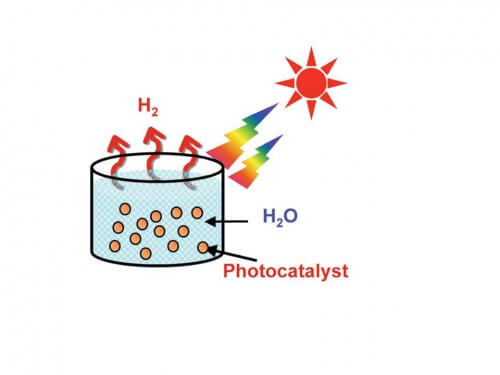The journal Science (February 27, 2015) reports on a breakthrough in the field of renewable energy storage: a new catalyst material, which enables the production of hydrogen in a cheap, efficient and stable way over time

The journal Science (February 27, 2015) reports on a breakthrough in the field of renewable energy storage: a new catalyst material that enables the production of hydrogen in a cheap, efficient and stable way over time.
Hydrogen is considered a promising future fuel because it is produced from water, which is always available, and because today there are already technologies that allow its use (for example in driving a car) without accompanying pollution and without the emission of greenhouse gases. Therefore, its attractiveness compared to traditional sources of energy (oil and coal) and also compared to sources of renewable energy is clear. That is why billions of dollars are invested in the US alone in programs such as the Hydrogen Fuel Initiative, which aim to develop technologies for the production and use of hydrogen.
In the production of hydrogen through photocatalysis, a photocatalytic powder is dissolved in water, which, when hit by sunlight, breaks down the water molecules into hydrogen and oxygen. The existing photocatalysts have disadvantages in three aspects: high price, low conversion efficiency (ie inefficient utilization of solar energy); and instability of the process (the substance stops working after a few hours).
Professor Isaiah Lipshitz from the Faculty of Materials Science and Engineering at the Technion, and his colleagues Professors Shot Tong Li and Zhenhui Kang from Suzhou University in China, headed a Chinese research team that developed a new photocatalyst. These are crystals of nitrogenous carbon, in which nanometric crystals of carbon are trapped. The advantages of this material, it turns out, are evident in the three aforementioned aspects: cost, efficiency and stability.
The new photocatalyst operates in two stages: (1) the decomposition of water in sunlight into hydrogen peroxide and hydrogen by the nitrogenous carbon; (2) the decomposition of hydrogen peroxide into water and oxygen by the nanometric carbon crystals. These crystals have another function: improving the absorption of the sun's rays by the photocatalyst, especially in the wavelengths where the sun's radiation is maximum (the orange range).
The new photocatalyst exhibits a conversion efficiency 10 times higher (and even more) than the conversion efficiencies of existing photocatalysts. A technical-economic study initiated by the American Ministry of Energy shows that the use of a photocatalyst with such energy efficiency (2%) enables the production of hydrogen at a cost of 6 dollars per kg of hydrogen. This price is very close to the target price defined by the ministry: 4 dollars per kg.
"The theoretical maximum efficiency is 15%," says Professor Lipshitz, "so there is still a lot of room for improving efficiency and lowering the cost, but there is no doubt that we will make a very dramatic step in this direction."

2 תגובות
Why is the theoretical limit 15%?
Perhaps by breaking down the hydrogen peroxide, it is possible to produce artificial gills for breathing under water,